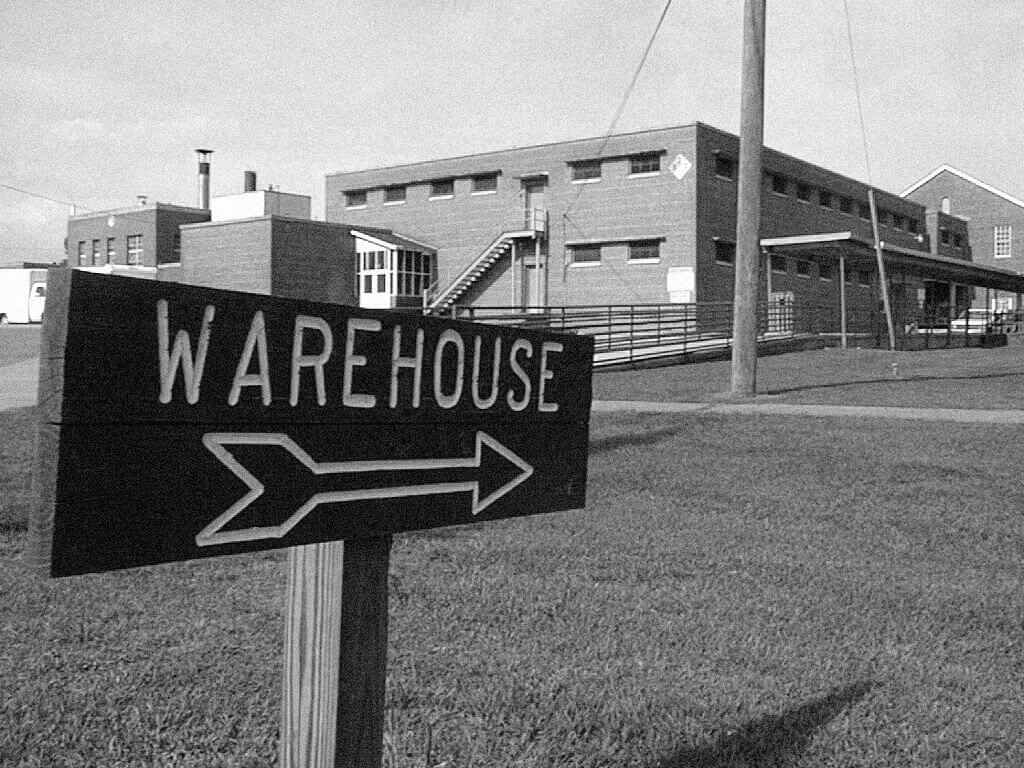
- Warehouse logistics development in the ancient world
- What challenges European warehouse logistics met in the 10th-19th centuries
- Warehouse logistics system in the USA
- How logistics in a warehouse looks like nowadays
- How warehouse logistics has evolved in Ukraine
- Warehousing and logistics at different times: chronological table
- Conclusions: Warehouse logistics prospects
Warehouse logistics has a long development history. As soon as mankind was engaged in farming and products exchange, the question arose where to store excess production. While ancient warehouses were only storage areas, modern storehouses perform many different functions. New warehousing services are also constantly evolving. A modern and well-organized storehouse makes it possible to increase a company’s profitability, rather than being a cost source.
In this article, WareTeka collected information on how warehouse logistics developed from ancient times till nowadays and how a warehouse became more and more important for business.
Warehouse logistics development in the ancient world
According to archaeologists and historians, storehouses were widespread in Ancient Egypt. The Egyptians created special premises to store different types of goods. In the first warehouses, grain and other foodstuffs were stored. Then appeared storehouses for other types of goods. Warehouses were segregated to store different products under one roof — weapons, food, clothes, etc. Each stock compartment was colored. The lower floors of warehouses were used for heavy and popular products, while the upper floors served for storage of expensive and more rarely requested goods. In addition, warehouse workers such as managers, loaders, and accountants, already existed in Ancient Egypt.

While for the Egyptians the main task of warehouse logistics was storage, in Ancient Greece the appearance of warehouses was preceded by another event. The ancient Greeks introduced a concept of wholesale trade and, consequently, they needed to store large quantities of goods. However, the highest point of warehouse logistics development took place in the time of the rise of the Roman Empire. The ancient Romans introduced a distribution system to provide large areas of the country with food as well as to trade with neighboring countries. Around 300 warehouses were built for food storage, from which products were transported throughout the country and abroad. The warehouses were ventilated and drained.
After the fall of the Roman Empire in 476, trade and warehouse logistics development in Europe stopped. For a long time, trade was chaotic. The situation changed only in the 10th century.
What challenges European warehouse logistics met in the 10th-19th centuries
The second stage of warehouse logistics development in Europe took place in 1000 years. At that time the Republic of Venice was at the crossroads of trade routes. Venice was an important port through which goods from Asia entered the European market. The product storage required not only storehouses but also a stock accounting. The Venetians also introduced warehouse bonds. All these factors led to the fact that warehousing brought profit and contributed to its economic prosperity.
In the Middle Ages and Renaissance, the number of warehouses increased due to the European guilds. They were involved in the import of manufactured goods and the export of grains. Members of the guild could buy raw materials and sell goods at the same price. They kept their goods in warehouses.
In the 18th century, the influence of guilds increased significantly. After the Industrial Revolution, the urban population increased sharply. Supply chains and storage areas for food and necessities had to be established to provide for the entire population. So warehouses became an important link in supply chains.
Warehouse logistics system in the USA
The warehouses in North America were already used by Native Americans. Settlers from Europe also built premises for storing goods purchased from natives. Colonial traders were engaged in the export of textiles, spices, coffee, and fur. There were also tobacco warehouses at the beginning of the 17th century in Virginia.
The population was increasing, new territories were developed. As a result, retail and wholesale trade evolved. In the United States, chain stores appeared in the mid-19th century. To meet the population’s growing needs, it was necessary to transform the warehouse logistics system. Manufacturing was also evolving. In the early 20th century, the Ford Motor Company and General Motors were the major automakers. At that time, Henry Ford implemented new principles of warehouse logistics management. You can read more about his ideas in our other article.

These factors led to the emergence of logistics complex prototypes in the United States in the 1930s. Gradually, warehouses from premises, whose main function is goods storage, became a distribution center. So in the United States, modern warehouse logistics has emerged.
How logistics in a warehouse looks like nowadays
After the Second World War, the approach to warehouse building changed. Warehouses became single-story. Due to this fact, construction became cheaper and the efficiency of warehouse staff increased. It also allowed the implementation of equipment for various warehouse operations. Warehouse productivity and profitability of companies increased.
However, it became clear that not only the proper warehouse design and the availability of all necessary equipment affected the warehousing processes’ efficiency. A storehouse also needed good management. Therefore, experts in product accounting and resource management are also required in warehouse logistics.
Modern warehouses are high-tech facilities that are an important part of a supply chain. They perform the functions of stockpiling, storing, and distributing goods. They are used for processing goods and preparing them for delivery to the final consumer. There are premises and logistics complexes with optimal storage conditions for any type of product on the logistics real estate market.
Automation and computerizing have also changed the way warehouses are organized. Thanks to the Warehouse Management System the inventory of goods has become more accurate. This software application has a positive impact on warehouse operations speed and storage space optimization.
The latest trends in warehouse logistics are the usage of warehouse robots. They can perform repeated and physically demanding tasks without human participation. We described what companies use warehouse robots nowadays previously.
Modern warehouses can be exhibition halls and even sights. A notable example is the silos in the Autostadt, a visitor attraction adjacent to the Volkswagen factory in Wolfsburg. The silos are two glass 60 meters tall buildings that are connected to the factory by an underground tunnel. The conveyor takes cars from the factory to the tunnel, where the robots elevate vehicles to their place in a car silo. Such multilevel storage allows saving space and attracts much visitors’ attention. In addition, the prospective buyer knows that he purchases a new car, without having driven a single meter. Thanks to this spectacular presentation of its products, Volkswagen could increase sales.

How warehouse logistics has evolved in Ukraine
The beginning of warehouse logistics development in Ukraine began in the 18th-19th centuries. The first storehouses were single-story, with the floor on ground level and ceiling height not exceeding 3.5 meters. After the end of the Second World War, warehouse logistics development depended on the priority of a particular industry. Thus, in the 1960s-1970s, the most modern and best-equipped were warehouses built for the needs of the manufacturing and military industry. Warehouses for foodstuffs were initially constructed as multi-story, but such facilities were inconvenient. They were later built as single-story, but these premises were not used effectively due to the low level of mechanization.
In the 1990s-2000s warehouse logistics in Ukraine began to develop rapidly. Foreign companies with expertise in logistics, access to modern technology and equipment have entered the market. A warehouse was no longer a strategic facility but an important competitive advantage. Now storehouses in Ukraine are built according to all modern warehouse logistics standards, using all necessary equipment and implementing WMS.
Warehousing and logistics at different times: chronological table
Since warehouse logistics development was gradual and recently took on a modern appearance, we present you with this table. It demonstrates the main stages in the evolution of the branch and their brief description.
| Time | Place | Event |
| c. 2300 BC | Ancient Egypt | Warehouses and the first warehouse workers appeared |
| 1st-2nd centuries | Roman Empire | Warehouse network development for established trade throughout the country and abroad |
| 10th-17th centuries | Republic of Venice | Warehouses are used not only as transit points for imported goods but also as a trading platform and a source of profit |
| 18th century | Industrial Revolution | Warehouses become a necessity to meet the needs of the increased urban population |
| 18th-19th centuries | Ukraine | The appearance of warehouses on the territory of Ukraine |
| 20th century | The whole world | Fundamentals and principles of modern warehouse logistics are established, a warehouse becomes a distribution center |
| 21st century | The whole world | The emergence of robots, warehouse automation level, and the number of warehousing services are constantly increasing |
Conclusions: Warehouse logistics prospects
Warehouse logistics evolve with economic, production, and technological development. Global processes also influence its development. For example, the COVID-19 pandemic has brought many companies to review their attitude to an obligatory insurance stock in case of supply chain disruption. In addition, the pandemic has affected the eCommerce segment growth. A warehouse is a priority for online retailers. Demand for warehouses has increased, as the requirements for them.
How future warehouses will look like is not known. However, it is clear that warehouse logistics retains its significance in the future.



